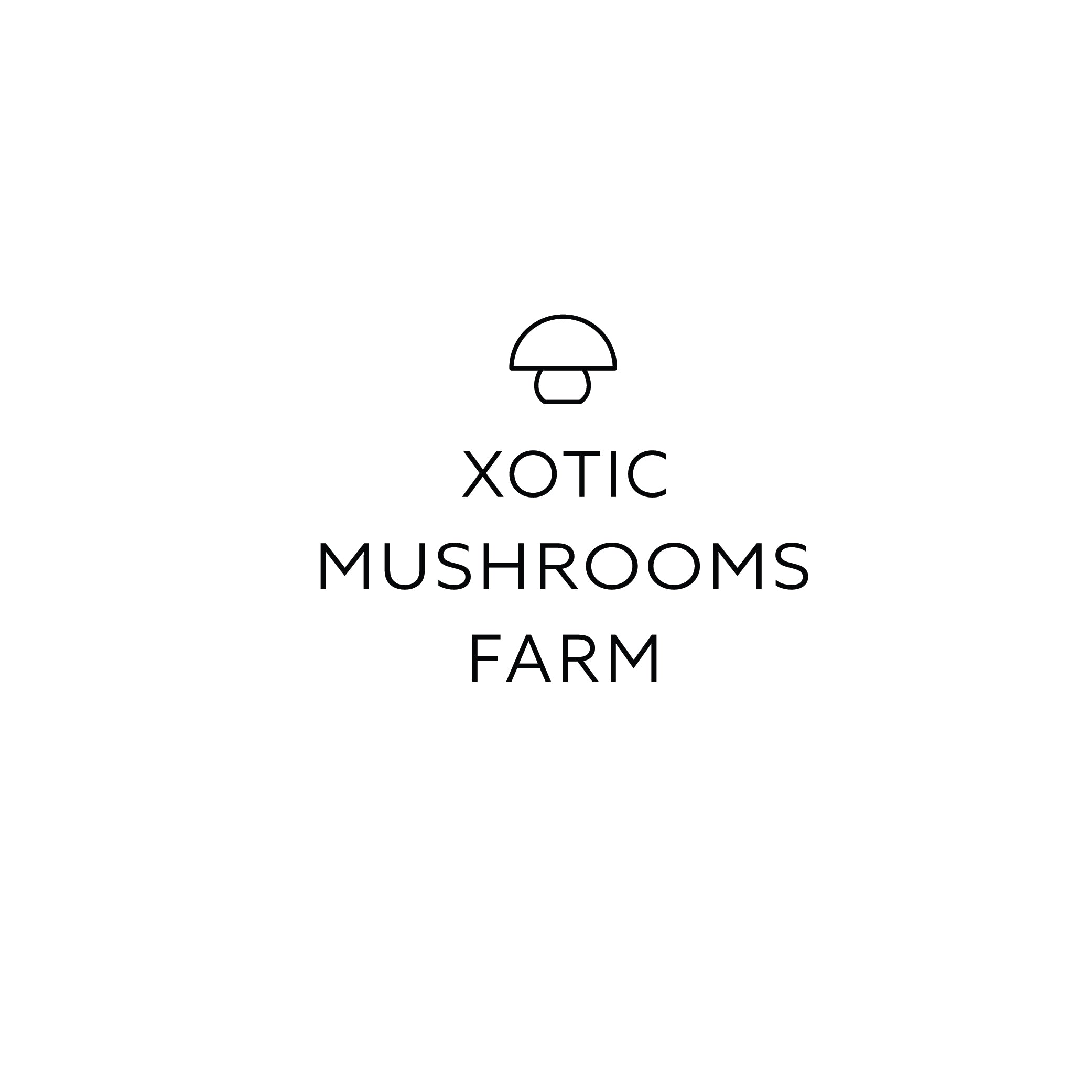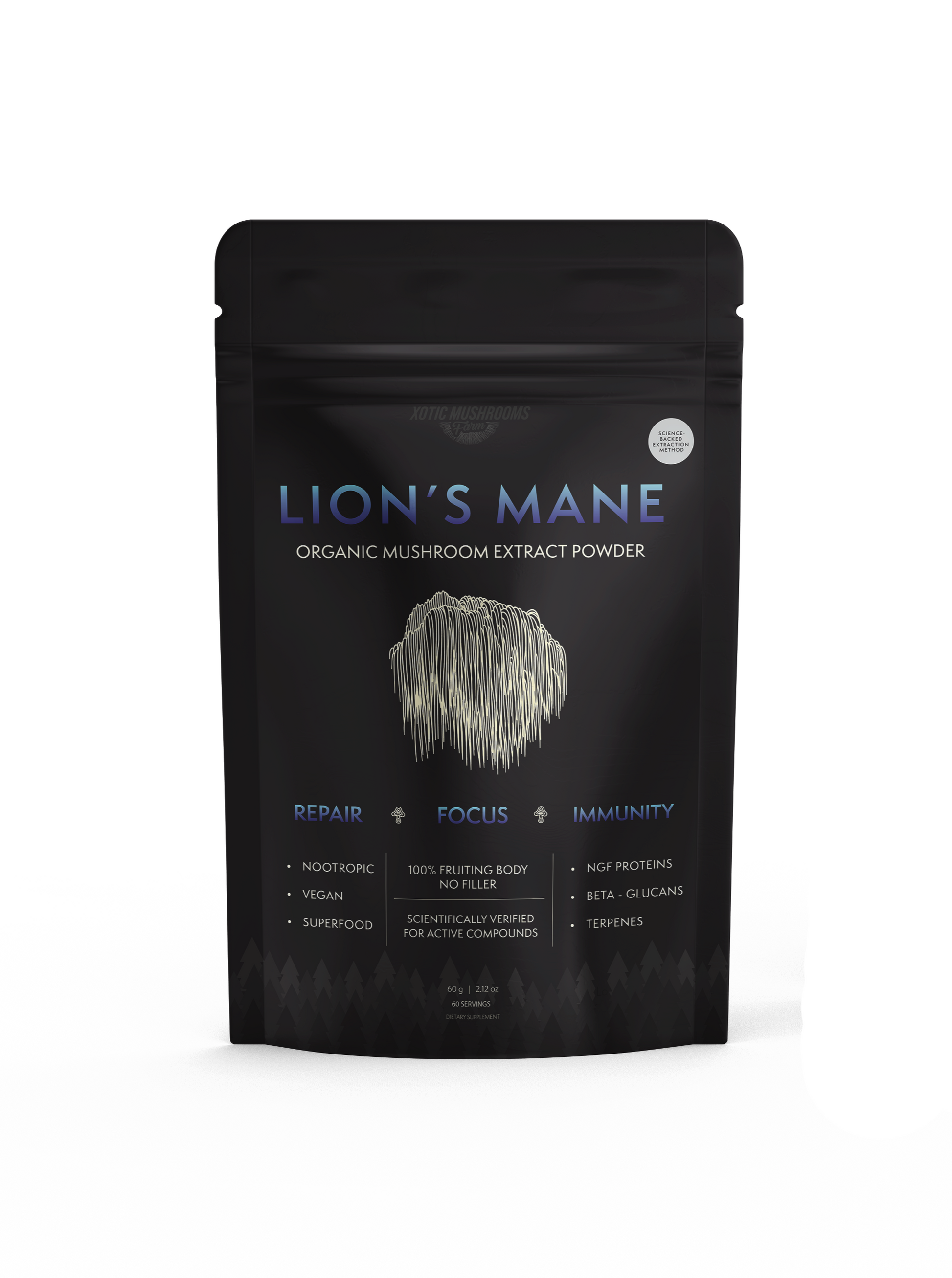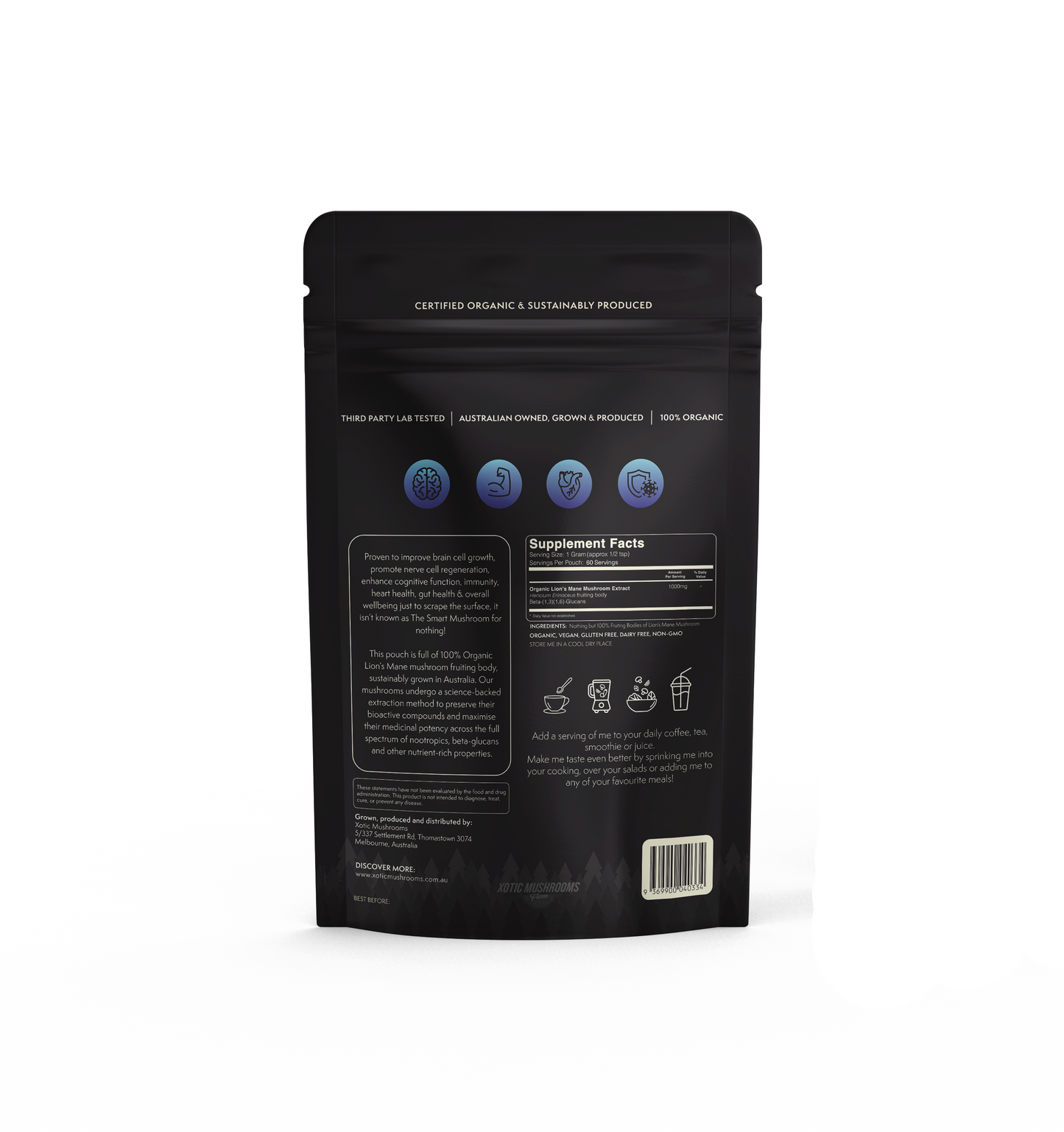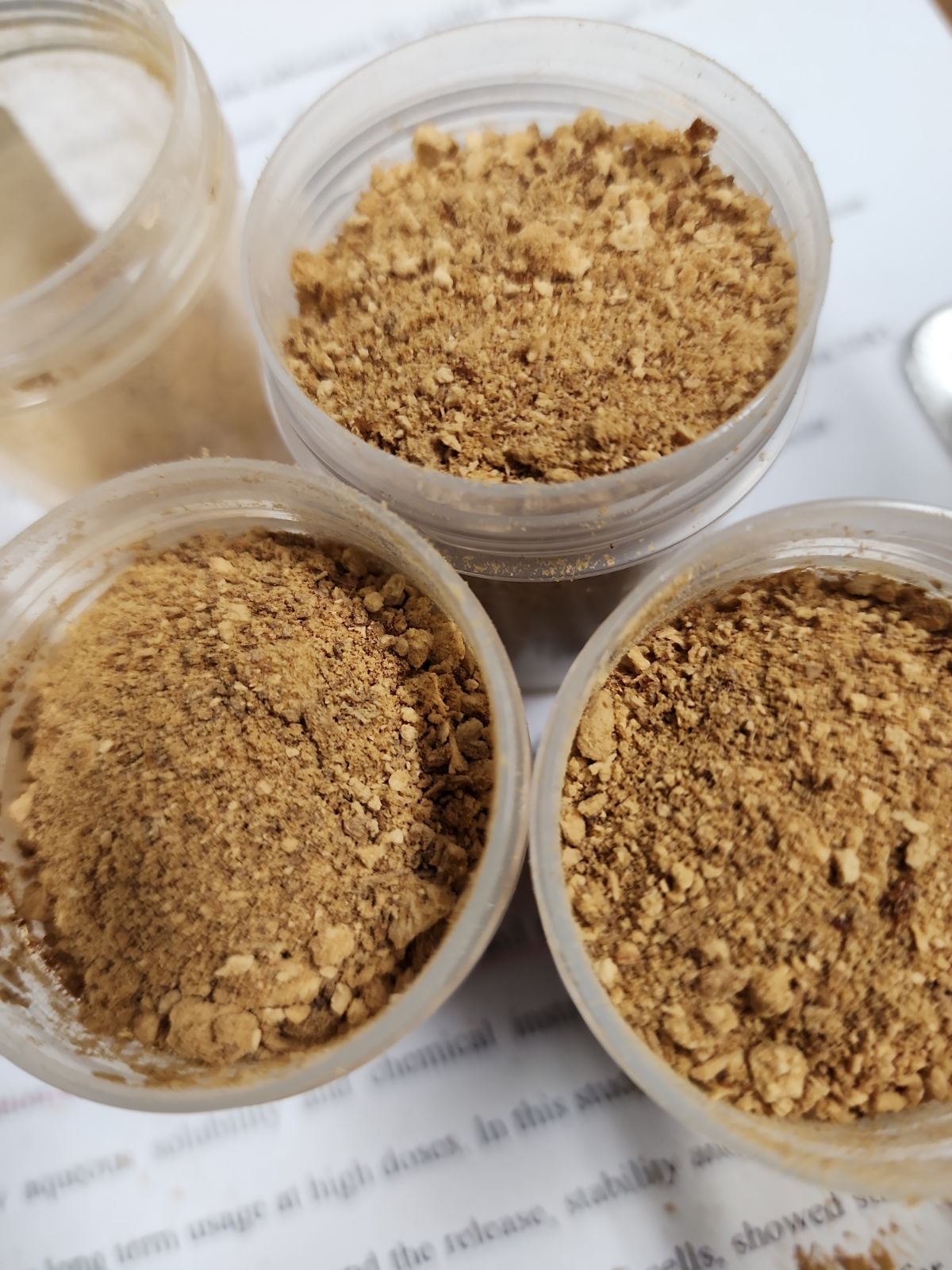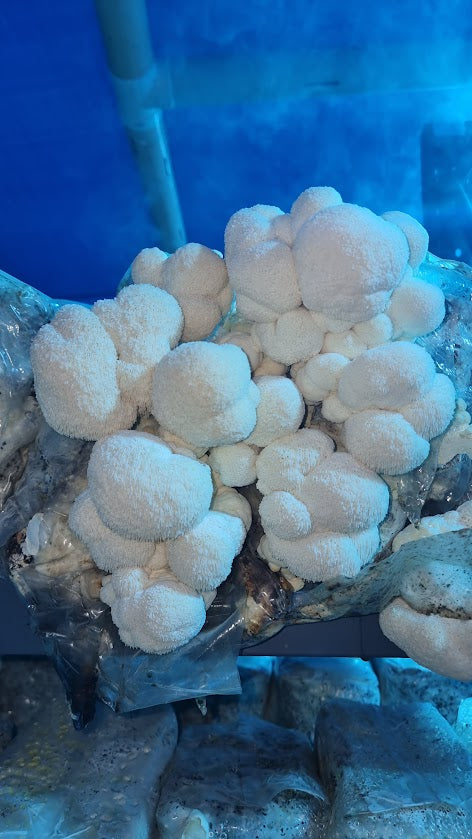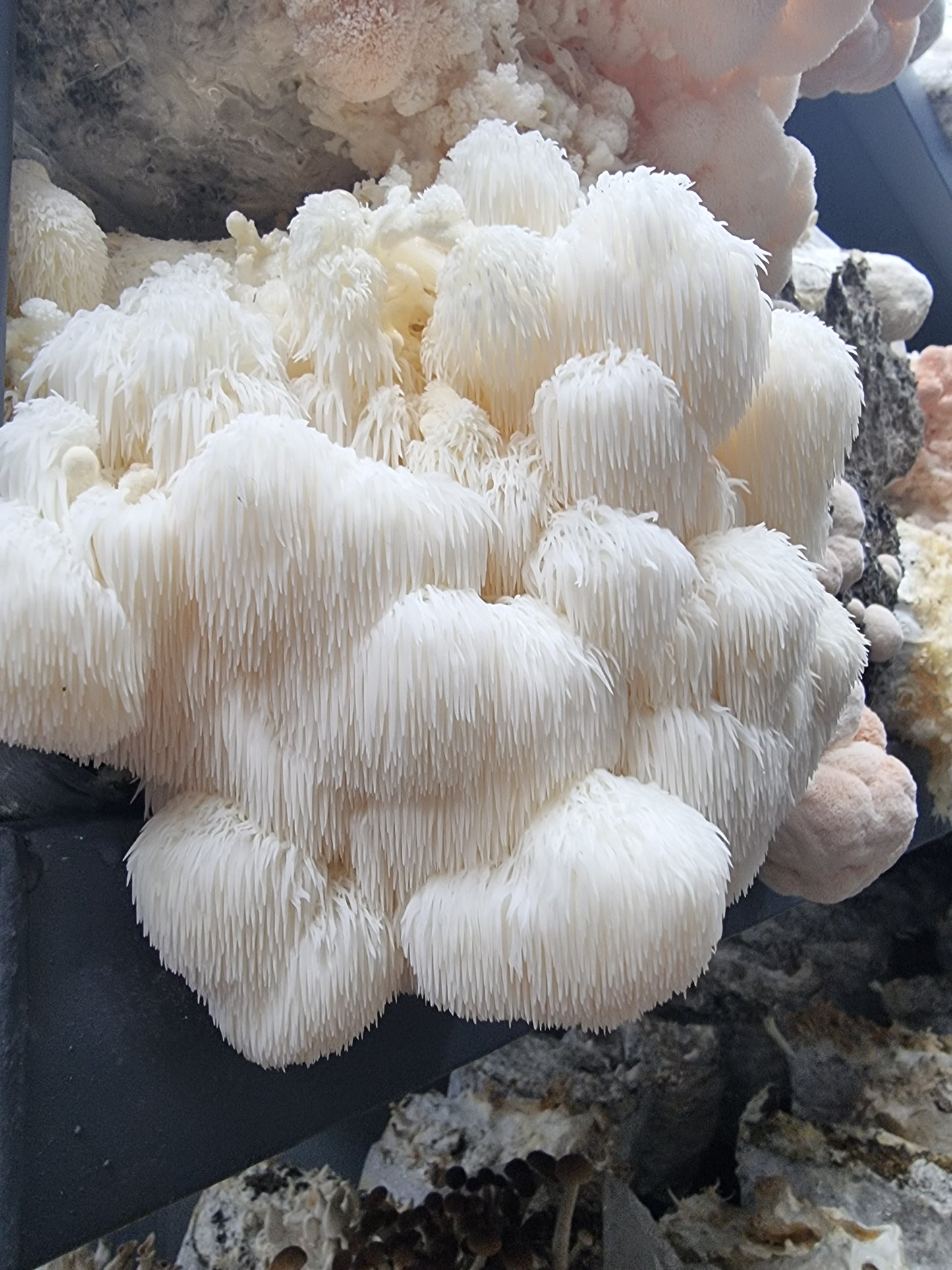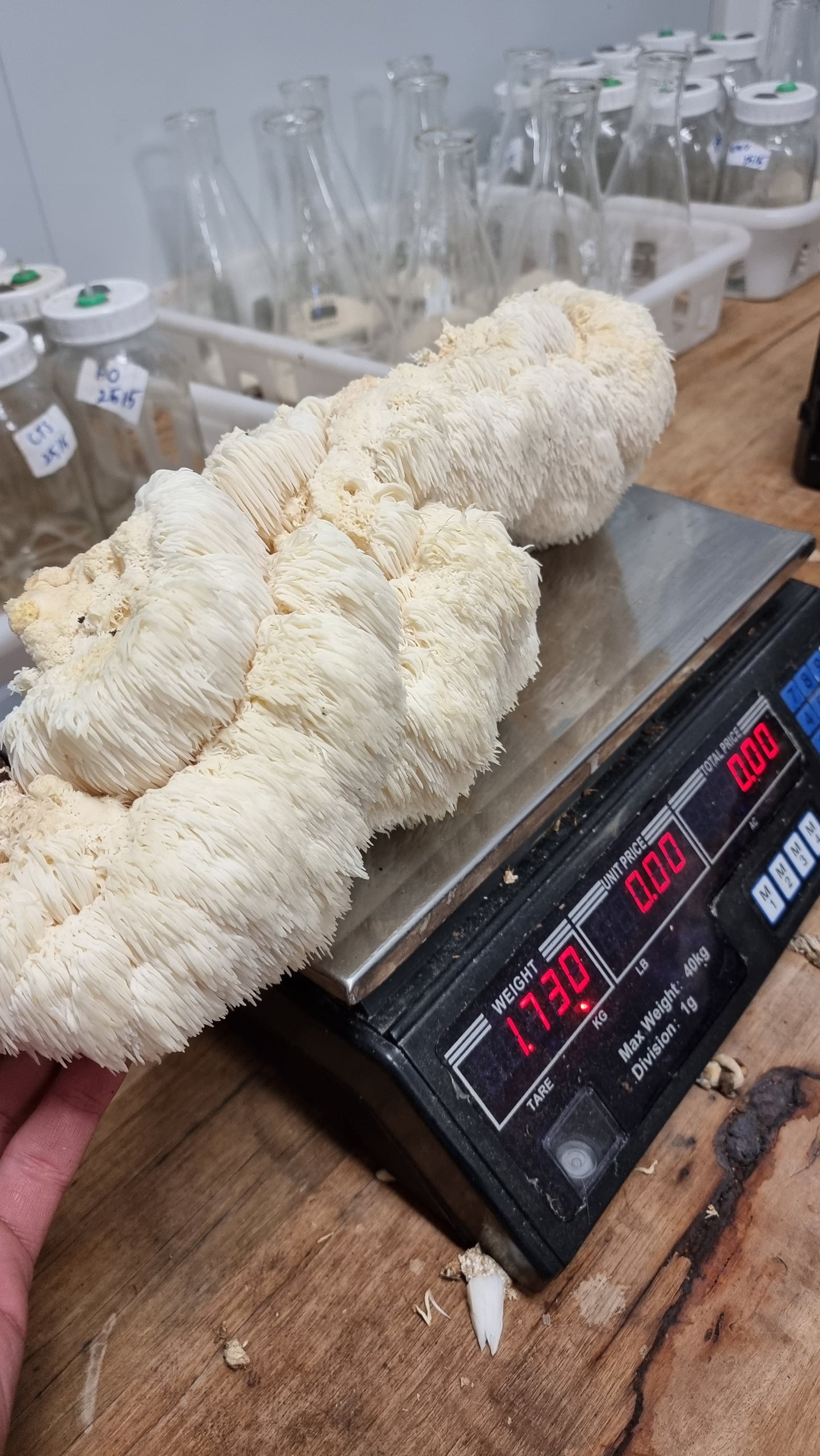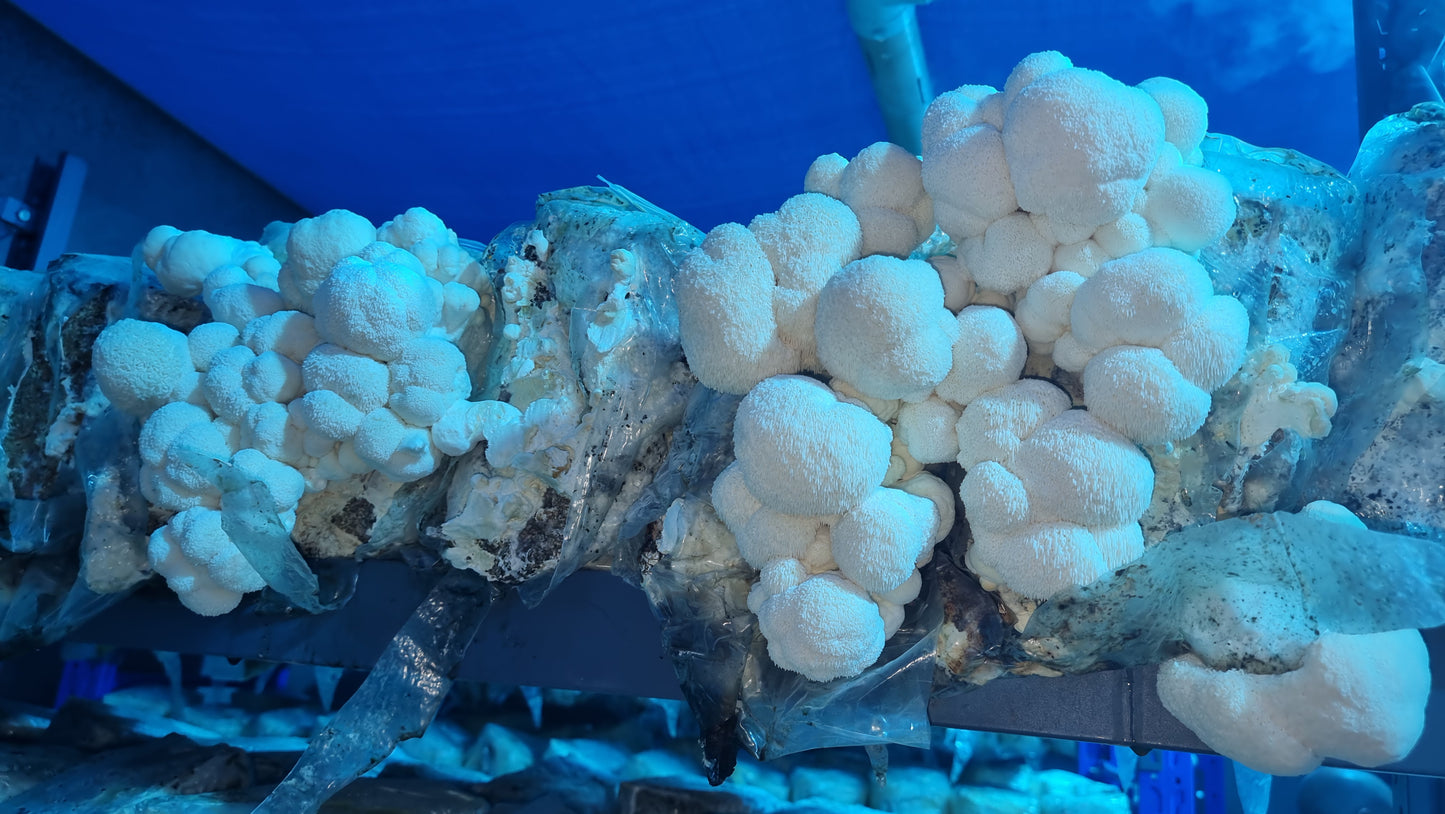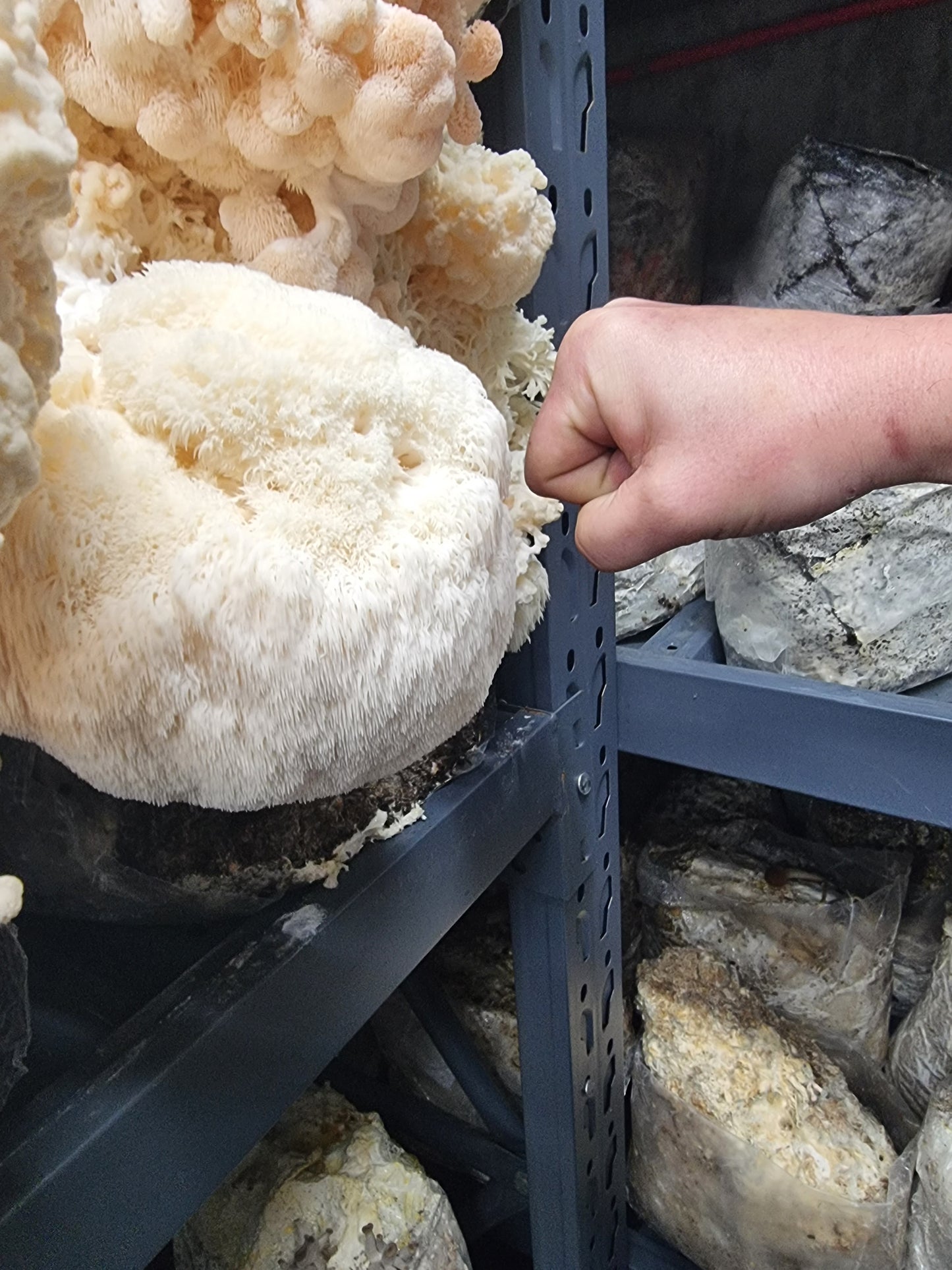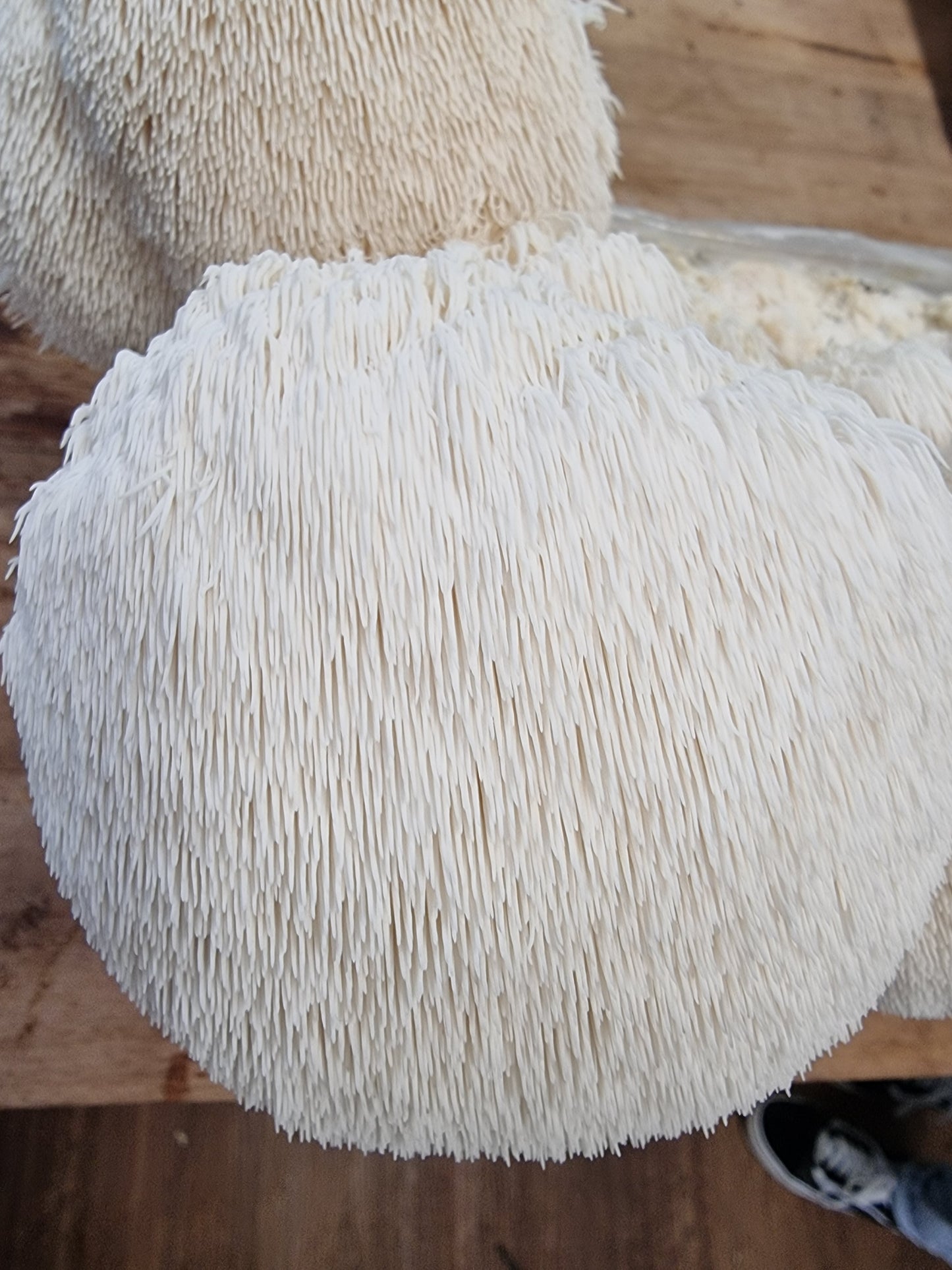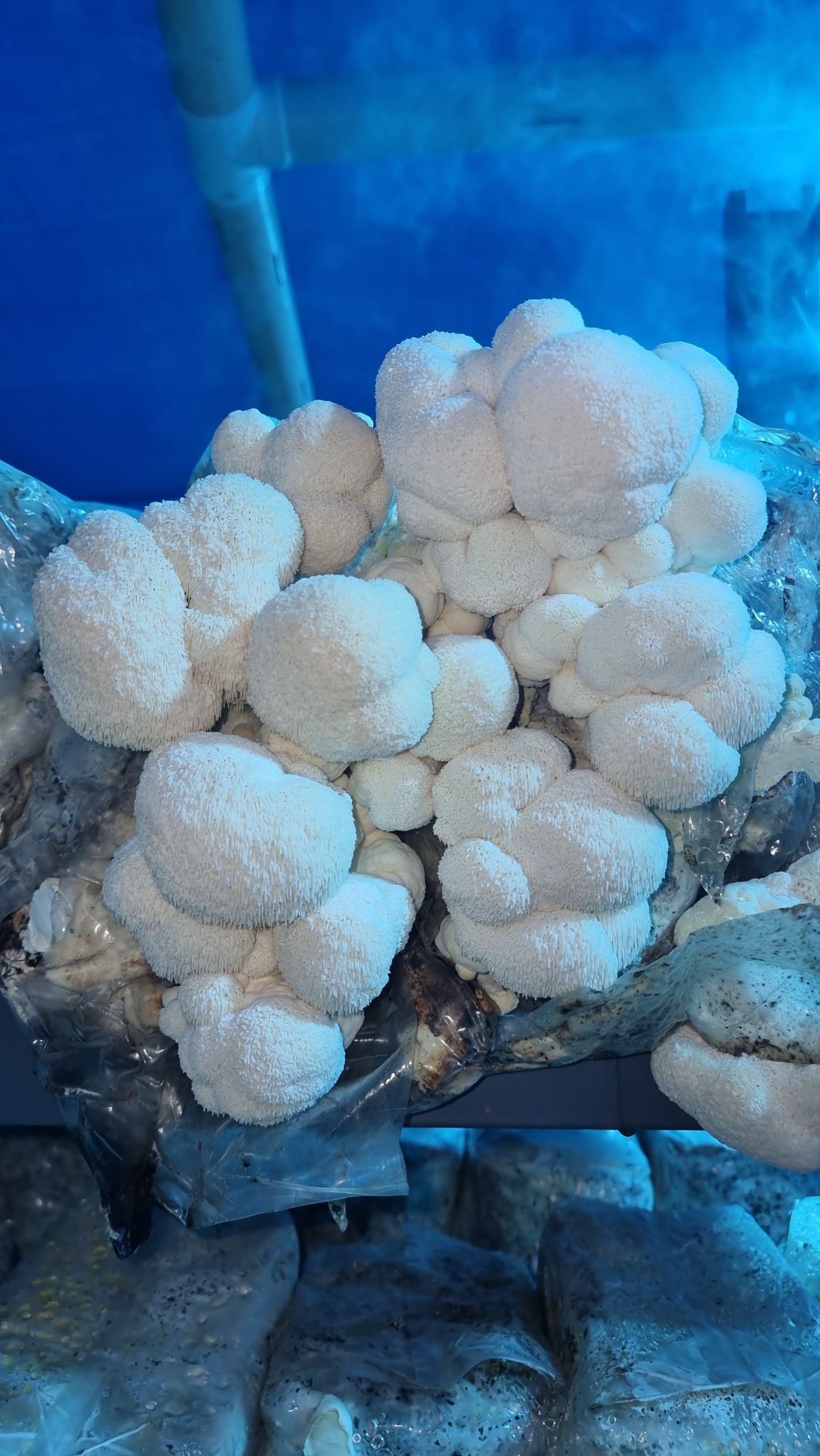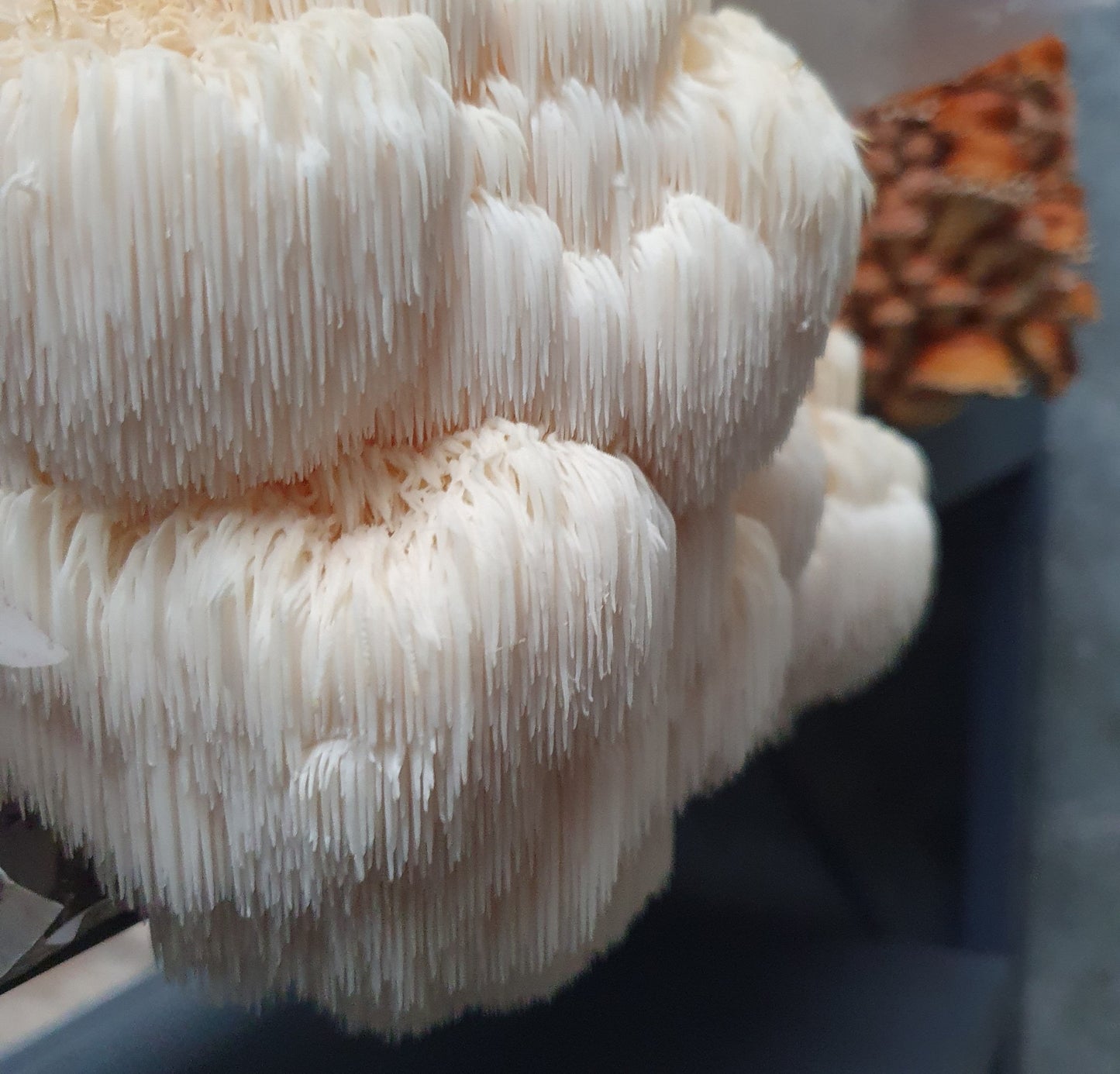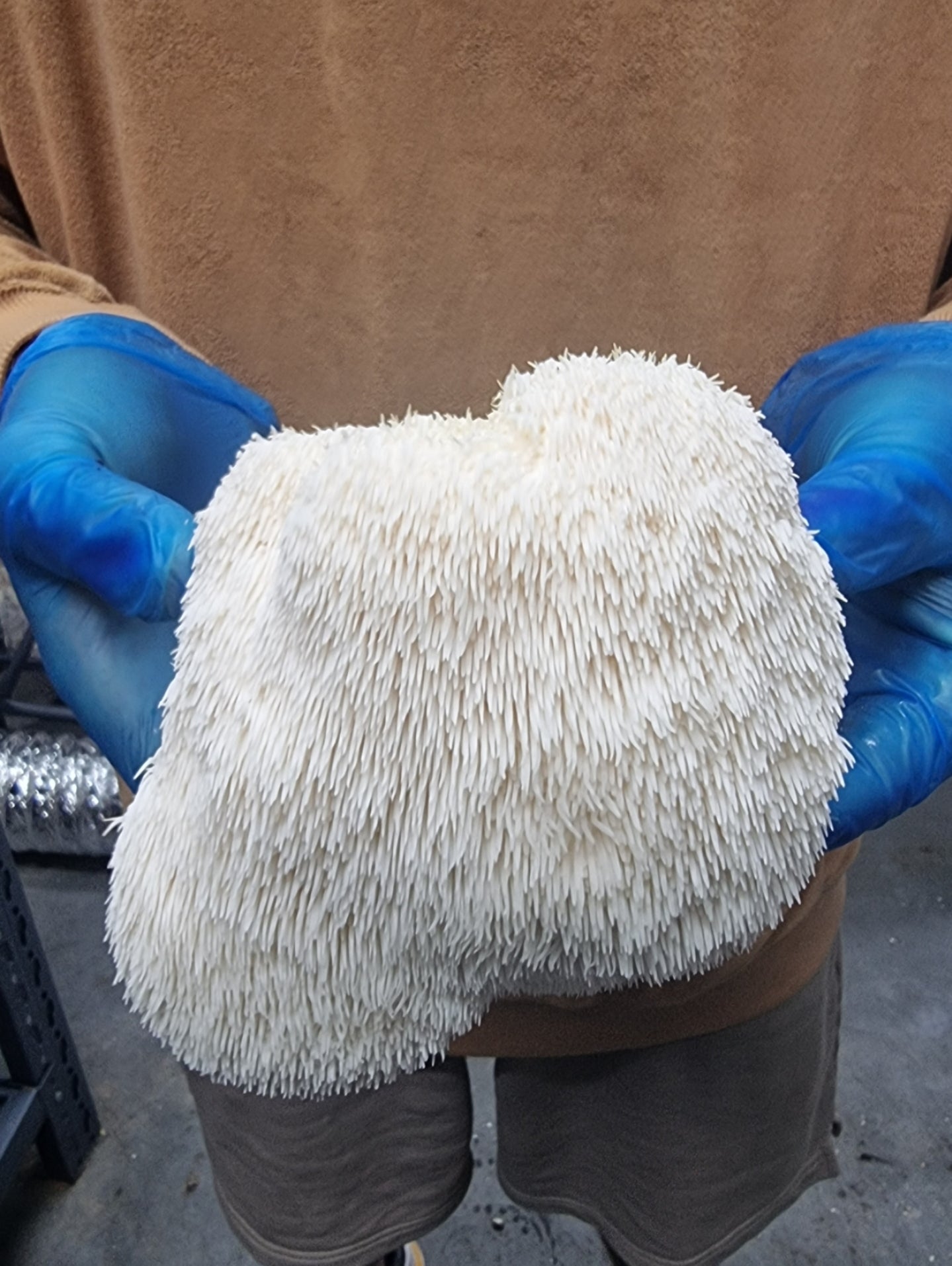Mushrooms are nature’s alchemists, transforming humble substrates into culinary and medicinal wonders. But what exactly is a mushroom substrate, and why does it matter? Whether you’re a curious beginner or a seasoned grower, understanding substrates is the key to unlocking healthy, bountiful harvests.
In this ultimate guide, we’ll demystify the foundation of mushroom cultivation, exploring the best materials, preparation techniques, and tips for success.
Ready to turn your growing space into a mushroom paradise? Let’s dig into the world of substrates and explore what makes mushrooms truly thrive!
What Are Mushroom Substrates?
Mushroom substrates are the materials used to support the growth of mushroom mycelium. They provide the necessary nutrients, moisture, and structure for the mycelium to colonise and produce fruiting bodies (mushrooms).
Common substrates include organic materials like straw, sawdust, wood chips, coffee grounds, and coconut coir. Different mushroom species thrive on specific substrates, with oyster mushrooms growing well on straw and shiitake mushrooms prefer hardwood sawdust.
The substrate must be sterilised or pasteurised to eliminate competing organisms before inoculation with mushroom spores or mycelium. Proper substrate preparation is crucial for successful mushroom cultivation.
Why Choosing the Right Substrate Is Important

Choosing the right substrate is crucial for successful mushroom cultivation because it directly affects their growth, yield, and quality. Here is why:
- Essential nutrients: The right substrate provides the necessary nutrients for mycelium growth.
- Optimised growth: Specific substrates are required for different mushroom species to thrive.
- Improved yield and quality: Suitable substrates support higher yields and better-quality mushrooms.
- Prevents contamination: The correct substrate reduces the risk of contamination by undesirable organisms.
- Moisture retention: The right substrate helps maintain optimal moisture levels for mycelium colonization.
- Supports fruiting: Some substrates are better suited for encouraging fruiting body formation.
- Species-specific needs: Each mushroom species has distinct substrate preferences for healthy development.
Top Substrates Options for Growing Mushrooms
Selecting a suitable substrate is crucial for successful mushroom cultivation, as it provides the necessary nutrients for growth. Common types of mushroom substrates include straw, sawdust, and manure-based mixtures.
1. Straw

Straw is one of the most popular substrates for growing mushrooms, particularly oyster mushrooms. It's cheap, easy to obtain, and has a good texture for mycelium colonisation.
Straw is usually pasteurised (or sometimes chopped and soaked) to eliminate competing microorganisms before inoculation. It provides a balanced mix of nutrients, moisture retention, and airflow, making it ideal for beginners and experienced growers.
Other mushrooms, such as lion’s mane, can grow well on straw with some supplementation.
2. Sawdust

Sawdust is commonly used for mushrooms that grow on wood, such as shiitake and maitake. It provides a solid, supportive base and holds nutrients for mycelium to feed on.
Sawdust is often supplemented with additional nutrients, like wheat bran, to boost yield and colonization speed. It requires sterilisation to prevent contamination from unwanted moulds or bacteria.
Sawdust is an excellent choice for hardwood-loving species because it mimics the natural substrate these mushrooms thrive on in the wild.
3. Coconut Coir
Coconut coir is a sustainable, lightweight substrate made from the fibrous material of coconut husks. It is often used with other materials, such as vermiculite or gypsum, to create a well-balanced growing medium.
Coconut coir is known for its moisture retention properties, which help maintain ideal humidity levels for mushroom growth. It’s a great option for oyster, shiitake, and button mushrooms.
As a renewable resource, it’s an eco-friendly choice for mushroom cultivators seeking a more sustainable growing medium.
4. Wood Chips

Wood chips provide a natural, nutrient-rich substrate for mushrooms that grow on wood, such as shiitake, maitake, and reishi. These chips mimic the forest floor environment, offering a suitable medium for mycelium colonisation.
The size and type of wood chips (hardwood vs. softwood) can impact the success of cultivation. Pasteurisation or sterilisation is often necessary to eliminate unwanted organisms and promote healthy mycelium growth.
Wood chips can be mixed with sawdust or other organic materials to enhance nutrient content and improve fruiting conditions.
6. Manure-Based Substrates
Manure, such as horse, cow, or chicken manure, is a traditional substrate for growing mushrooms like buttons and portobello. Rich in nutrients, manure helps support rapid mycelium growth and provides the necessary elements for fruiting.
However, it needs to be carefully pasteurised to kill any harmful bacteria or pathogens that may be present. Manure-based substrates are often mixed with straw or other organic matter to create a well-balanced medium.
Though effective, manure-based substrates require careful handling and pasteurisation to ensure a successful harvest.
5. Coffee Grounds

Coffee grounds are an excellent option for oyster mushrooms. They are nutrient-rich and readily available from many local coffee shops. Fresh or used coffee grounds contain nitrogen and other minerals that support mycelium growth.
However, coffee grounds need to be pasteurised or used immediately after collection to prevent contamination from bacteria or moulds. They retain moisture well and are easy to work with, making them a great choice for small-scale or home cultivation projects.
Coffee grounds can also be mixed with other substrates to create a nutrient-dense growing medium.
7. Compost
Compost, a mixture of decayed organic matter, is an excellent all-purpose substrate that supports a wide variety of mushroom species. It is rich in nutrients, providing a balanced environment for mycelium to grow.
Compost can be made from various organic materials, such as leaves, grass clippings, food waste, and manure. Pasteurization is often required to prevent contamination and ensure a healthy growing medium.
While compost works well for species like button mushrooms, it can also support more exotic varieties when appropriately prepared.
How to Prepare Mushroom Substrates

The key to successful mushroom cultivation starts with properly preparing your substrate and grain spawn. Whether you're using straw, sawdust, or coffee grounds, the preparation process plays a critical role in ensuring healthy mycelium growth and a bountiful harvest. Learn the essential steps to create the perfect environment for your mushrooms to thrive.
1. Selecting the Right Material
The first step in preparing a mushroom substrate is choosing the appropriate material for the mushroom species you plan to grow. Different mushrooms have different substrate preferences, so it's essential to match the substrate with the type of mushroom you're cultivating.
For example, oyster mushrooms do well on straw, while shiitake mushrooms prefer sawdust or wood logs. Ensure the substrate is fresh, clean, and free from contaminants like mould or pests.
2. Shredding or Chopping
Most organic substrates, like straw, need to be shredded or chopped into smaller pieces to create a more suitable surface for mycelium colonisation. Straw, for instance, should be chopped into short lengths (3-4 inches) to improve colonisation and moisture retention.
Sawdust and wood chips may require additional supplementation, like wheat bran, to provide more mushroom nutrients.
Breaking the substrate into smaller particles increases surface area, making the mycelium's spread easier.
3. Pasteurisation or Sterilisation

To ensure the substrate is free from harmful microbes, it needs to be pasteurised or sterilised before inoculation.
Pasteurization involves heating the substrate to around 160-180°F (71-82°C) for 30-60 minutes to kill off competing bacteria and molds, while preserving beneficial microbes that help the mycelium grow.
Sterilization, typically done in a pressure cooker, is more intensive and is used for substrates like sawdust or those with added supplements, as it kills all microorganisms, ensuring a sterile environment for the mushroom culture.
4. Moisture Adjustment
After pasteurisation or sterilisation, the substrate should be allowed to cool before adjusting moisture levels. The substrate must be moist but not too wet, as excess moisture can lead to contamination.
A common test is to squeeze a handful of the substrate—if water drips out, it's too wet; if only a few drops come out, it's just right. Aim for around 60-70% moisture content, which is ideal for mushroom mycelium to thrive.
5. Inoculation

Once the substrate has cooled and the moisture level is adjusted, it's time to inoculate with mushroom spores or mycelium. This is done by mixing the substrate with the mushroom spawn (mycelium culture) in a clean, sterile environment.
Be sure to handle the spawn gently to avoid contamination. Mix the spawn thoroughly through the substrate to ensure even distribution.
6. Incubation
After inoculation, place the substrate in a clean, dark, and warm environment (usually between 65-75°F or 18-24°C) to allow the mycelium to colonize the substrate. This phase can take from 2-4 weeks, depending on the substrate and mushroom species.
Keep the substrate moist but not too wet during this time. Once the mycelium has fully colonized the substrate and turned white (indicating healthy growth), it’s ready for fruiting.
7. Fruiting
After the incubation period, the substrate should be moved to a fruiting environment with higher humidity and cooler temperatures (around 55-65°F or 13-18°C), and exposure to light is important for fruiting. Mist regularly to maintain moisture and provide fresh air.
In this phase, mushrooms will start to emerge, and you can start harvesting once they reach the desired size.
Common Mistakes to Avoid When Choosing Substrates

Choosing the right substrate is crucial for mushroom success, but many growers make simple mistakes that can hinder their crops. Avoid these common errors to ensure a thriving mushroom harvest:
- Using the wrong substrate for the species: Each mushroom species has specific substrate preferences; using the wrong one can lead to poor growth or no fruiting at all.
- Neglecting sterilisation or pasteurisation: Failing to sterilise or pasteurise your substrate can lead to contamination, outcompeting your mushroom mycelium.
- Incorrect moisture levels: Substrates should be damp but not soaking wet; too much or too little moisture can hinder mycelium growth or cause contamination.
- Using contaminated or old substrate: Old or contaminated substrates can introduce harmful microorganisms, leading to failed crops.
- Not supplementing nutritionally deficient substrates: Some substrates, like straw or sawdust, may need additional nutrients to promote optimal growth and high yields.
- Overlooking pH levels: Different mushrooms require different pH levels; ignoring this can affect colonisation and fruiting.
- Not considering environmental factors: Environmental conditions like temperature and humidity can impact substrate performance and mushroom growth.
Conclusion
Ready to grow your own mushrooms? Avoid common mistakes by choosing the right substrate and following best preparation practices. Whether you're a beginner or an experienced grower, the right approach can lead to a successful harvest.
Start today and enjoy fresh, homegrown mushrooms—your successful mushroom-growing journey begins here!
